Special exhibition “Idemitsu Art Award Artist Selection 2020”
“SAS 2020” is a special exhibition aimed at continuing to support artists even after winning or being selected for the “Shell Art Award.” New and recent works by four young artists selected by the Shell Art Prize jury will be exhibited at the “Shell Art Prize Exhibition 2020” exhibition venue to be held in December. This time, the 9th time, we selected Tamotsu Ikeya, Arisa Kumagai, Dawoon Jung, and Ai Naruyama. Additionally, this year we will also be holding an exhibition on Ryuma Takeda, who participated in last year's “Residency Support Program 2019.”
*The “Idemitsu Art Award” was renamed from the “Shell Art Award” in April 2022.
Naoko Sumi Jury Recommended Author: Tamotsu Ikeya
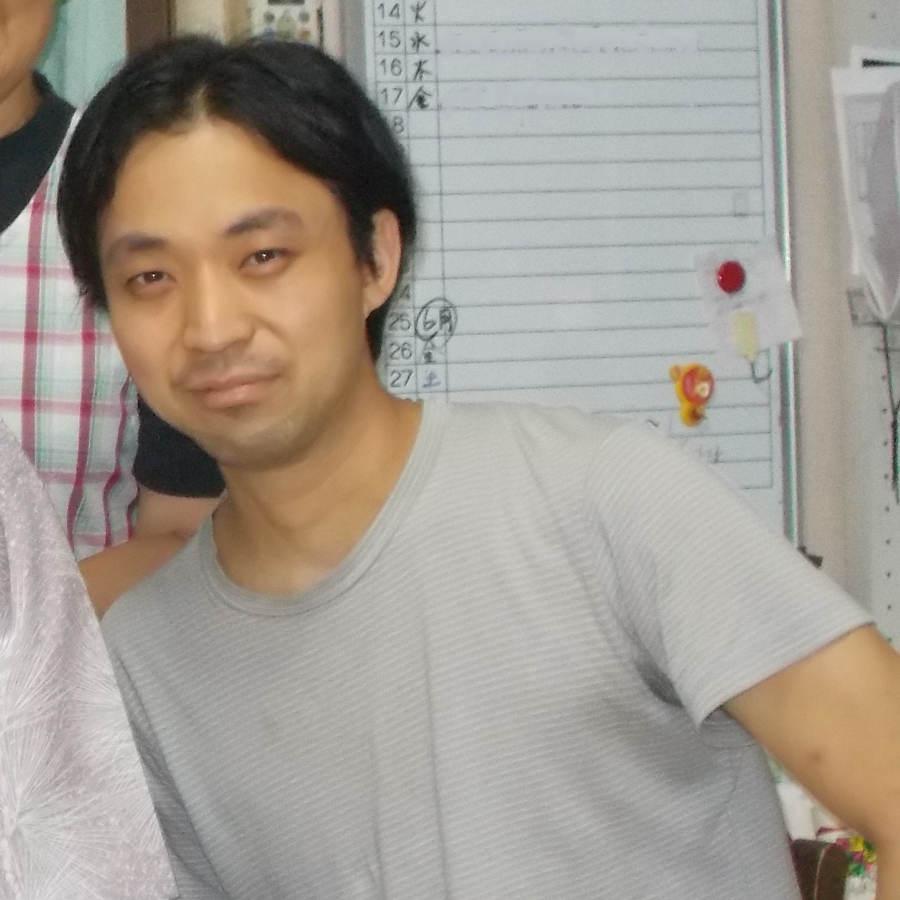
Career
| 1982 | Born in Shizuoka Prefecture Lives in Shizuoka Prefecture |
|---|---|
| 2008 | Completed the Department of Painting, Graduate School of Fine Arts, Kyoto City University of Arts. |
exhibition
| 2014 |
“eeny,meeny,miny,moe|red” eN arts (Kyoto) “All in” ccc (Shizuoka) solo exhibition |
|---|---|
| 2016 |
“Kamezaki Sekomichi Exhibition” Kamezaki-cho area of Handa City (Aichi) “I've felt like this somewhere before.” Gallery Mikawaya (Aichi) |
| 2017 |
"Dribble2” 2kw gallery (Shiga) “Visible, invisible” Takahama City Ceramics Village Kawara Art Museum (Aichi) |
| 2018 |
“Surroundings” Seesaw Gallery+hibit (Aichi) Solo exhibition “eeny,meeny,miny,moe|yellow” eN arts (Kyoto) |
| 2019 | “Meimei Art 2” Chino City Museum of Art (Nagano) |
Awards etc.
| 2015 | Shell Art Award Selected |
|---|
Reference works Solo exhibition “Surroundings” exhibition view
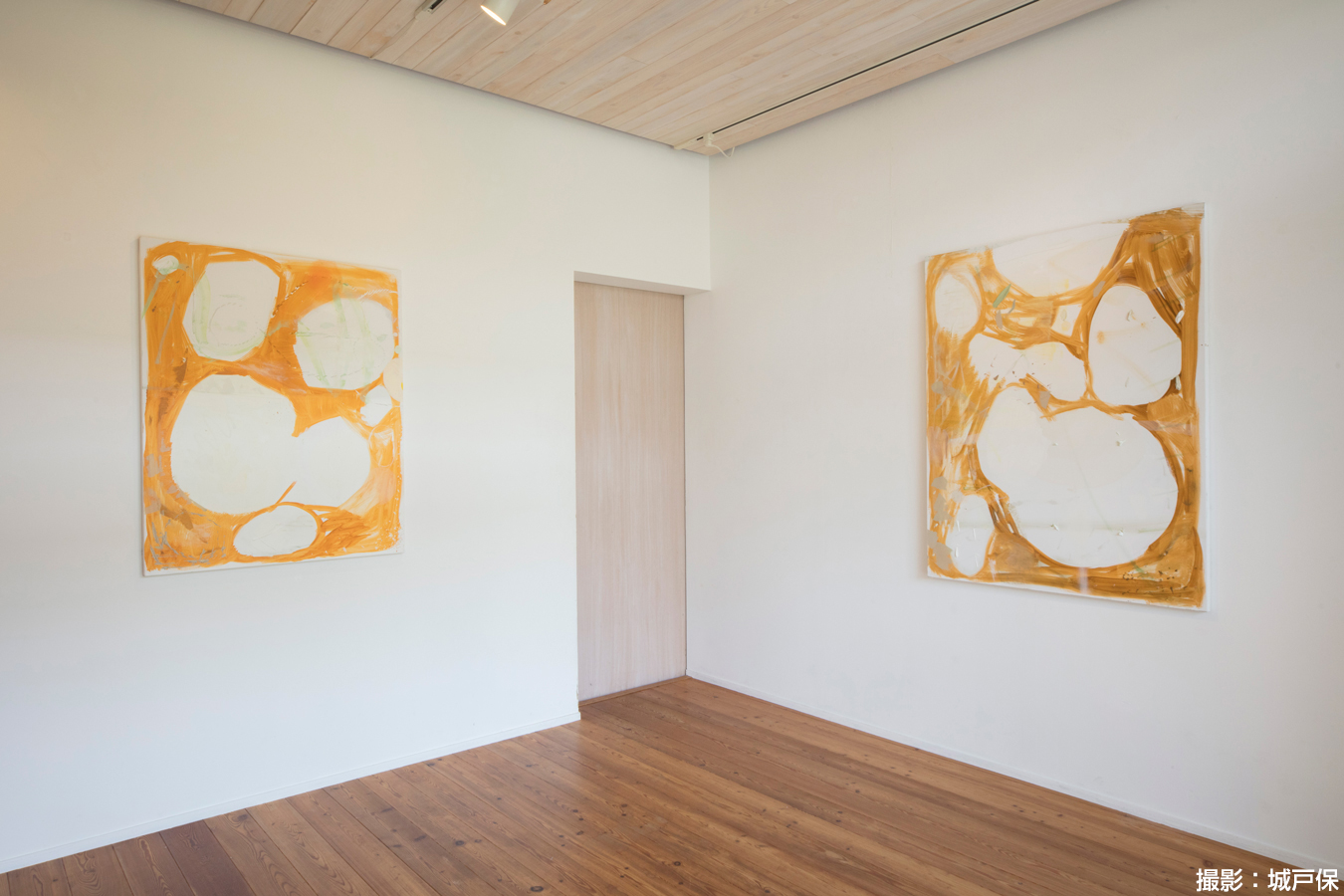
Photography by Tamotsu Kido
116.7cm×91.0cm
About the work/production
I turned the failed painting over, and when I forgot about it, I turned it over and found that it had been completed, and I thought that the ending was not set in stone, but that it was moving through time. If you aim to draw at a fixed point, the drawing will become linear, and the space will become smaller each time you draw, making it cramped and boring. In a dynamic and open space, the ending point moves around, and it can end at any time, or it doesn't have to. I would like to draw a picture in such a room.
Sumi judge recommendation comment
When facing a painting as a viewer, there are many points to enjoy, one of which is the texture of the material. Not too long ago, Tamotsu Ikeya was presenting works that stimulated the brain with a variety of textures that appeared naturally on the screen, and evoked a tactile sensation even though you couldn't actually touch the screen. was there. Regardless of the individual's consciousness or self-awareness, for Ikeya, the process of painting is a dialogue with materials such as canvas and paint. If until a few years ago, the dialogue was a “fight,” with even glimpses of provocative gestures, these days it feels more like a “play.” Instead of being so frightened by the opponent's actions like before, I can say that I have relaxed and am able to enjoy the opponent's reactions. Of course, there is no correct answer. I'm looking forward to the texture of a different type of matière that is born from a series of tension and relaxation.
Tomoko Yabumae Jury Recommended Author: Arisa Kumagai
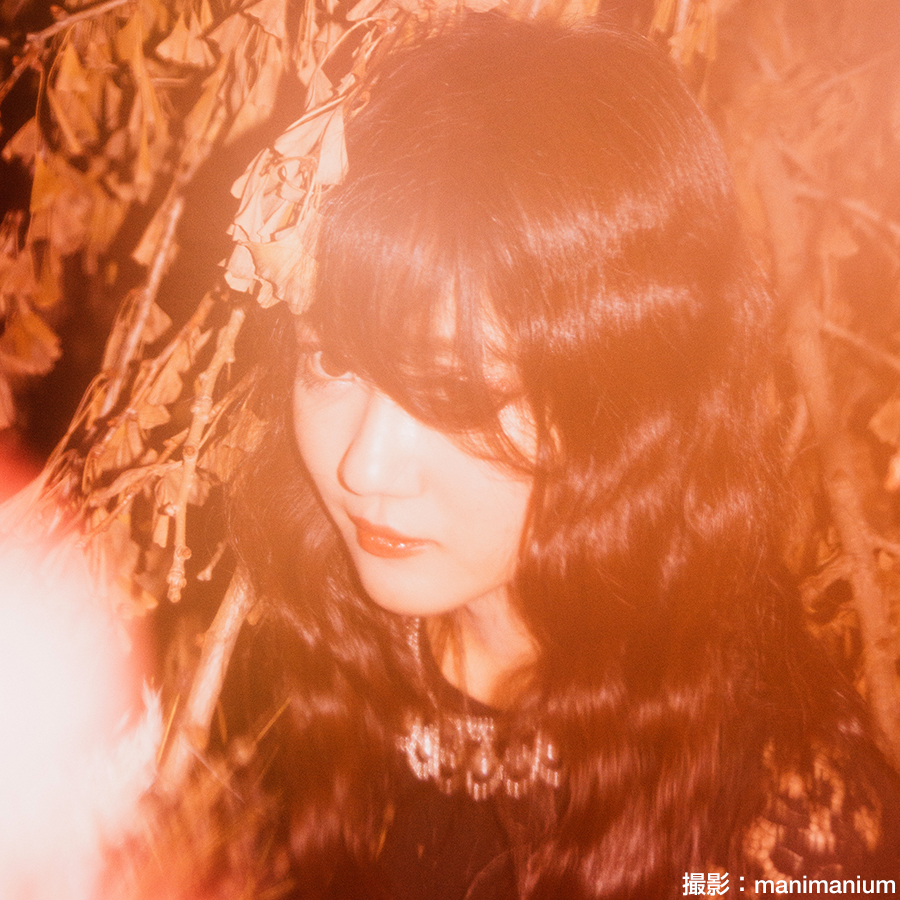
shooting manimanium
Career
| 1991 | Born in Osaka Prefecture |
|---|---|
| 2015 | Completed Kyoto University of Arts, General Art Department |
exhibition
| 2014 | Uenonomori Art Award Exhibition (Uenonomori Art Museum, Tokyo) |
|---|---|
| 2015 |
Chaos Exhibition (Spiral, Tokyo) Solo exhibition Leisure Class (Gallery Art Composition, Tokyo) |
| 2016 |
ULTRA x ANTEROOM exhibition 2016 (Hotel Anteroom Kyoto/Kyoto) ARTOTHEQUE SELECTION 2016 (Kyoto University of Arts, Kyoto) |
| 2017 | Portrait(Gallery Koyanagi, Tokyo) |
| 2019 | Solo exhibition Single bed (Gallery Koyanagi, Tokyo) |
| 2020 | Photographs(Gallery Koyanagi, Tokyo) |
Awards etc.
| 2013 | Shell Art Award Selected |
|---|---|
| 2014 | Received Akira Asada Award at SPURT Exhibition (Kyoto University of Arts, Kyoto) |
Reference works Works to be exhibited “Single bed, Fragile Leopard”
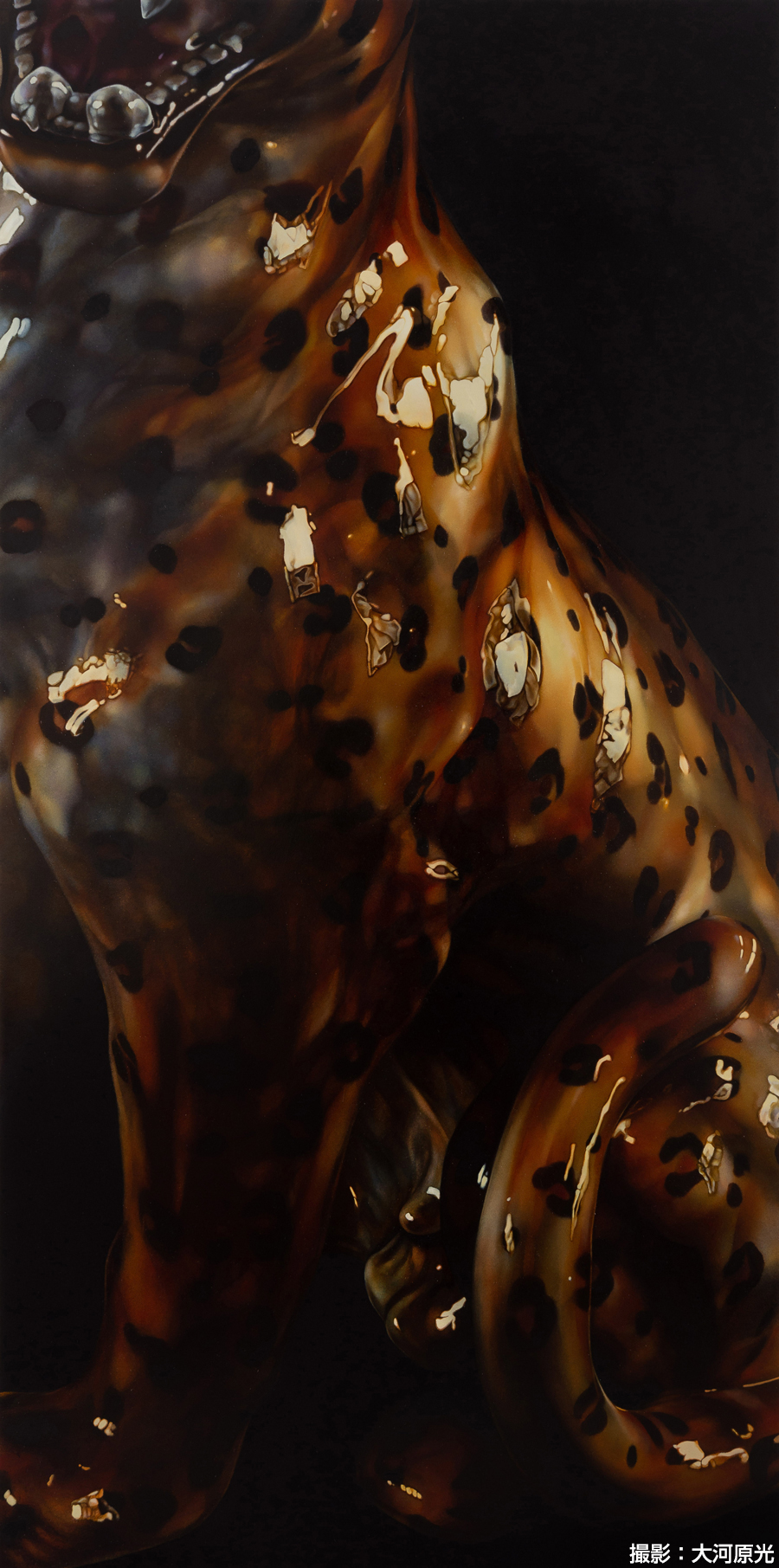
Photography by Hikaru Okawara
Technique: oil painting, plaster, panel
195.0×97.0cm
About the work/production
Based on my own and others' backgrounds, I create works that focus on the irrational and contradictory nature of human beings, such as wealth and poverty, life and death, love and hate, and the emotions and images that are two sides of the same coin. .
The ceramic leopard in particular was depicted as a symbol of harm to self and others.
Married to a huge husband. I was once again reminded that I was physically weak, and I became jealous and admired him.
Before I knew it, the feeling that had been smoldering in my heart, “I wanted to be born as a man,” had accumulated as a distorted feeling, “I wanted to be born as you.”
One night, my husband woke up from a nightmare and strangled me.
Her husband woke up from his dream, was shocked, shrunk his large body, and cried, “I might kill you.”
I felt an intense sense of euphoria at the idea that “even though I'm physically weak, I can hurt your heart this much,” and at the same time, when my husband shed tears over his own unconscious violence, I thought, “What a pathetic person.” I thought it was very special.
I feel that as long as I am creating works, I cannot escape my own perpetration.
Jury member Yabu’s recommendation comment
The works of Arisa Kumagai, whose family owned a clothing store, strangely connect the luxurious textures of high fashion with family memories, and the extraordinary and the ordinary. What Kumagai depicts is the realm of thorns and sinisterness that emerges when the resolution of “beautiful things” is raised. This suggests that the positive world that surrounds our lives, such as beauty, love, and happiness, is fleeting and fragile, resting on a precarious foundation such as the rapidly changing consumer society and the imbalance of power due to gender differences. do. The new work, which depicts a leopard as an ornament, is an impressive depiction of the fact that hidden aggression and longing for a relationship of control are hidden in love, and that it is difficult for women to deny this. Shown with statement. Kumagai quietly faces the urge that stirs him up, aware that this violence is inextricably linked to the act of painting.
Atsushi Shinfuji Jury Recommended Author: Dawoon JUNG
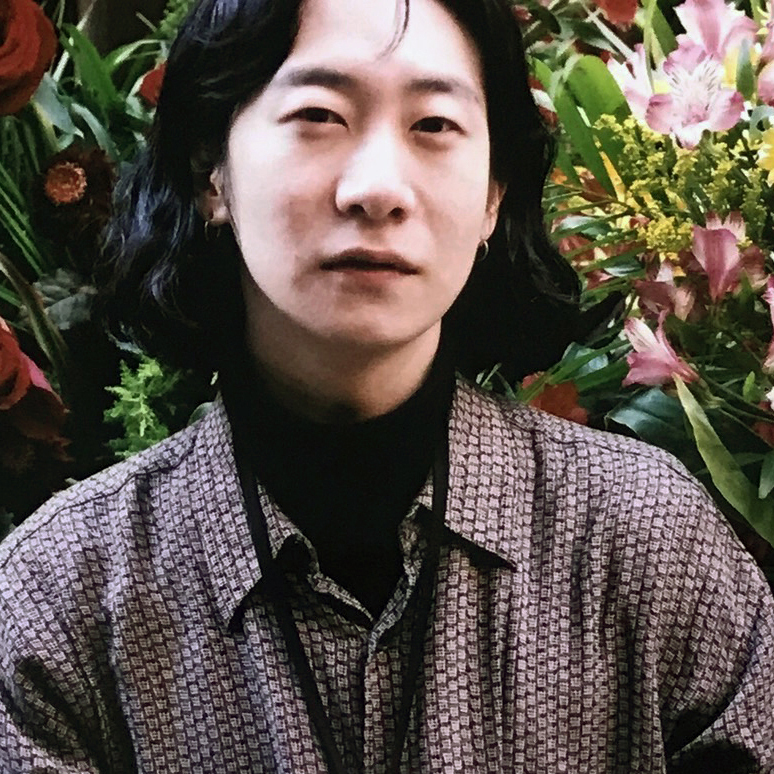
Career
| 1989 | Born in Korea |
|---|---|
| 2020 | Enrolled in doctoral course at Musashino Art University Graduate School |
exhibition
| 2017 |
Solo exhibition “A Day in The Life” Gallery Natsuka/Tokyo Group exhibition “Rockfall Project 10th Phase Chronicle - Traces and Developments” Former Rockfall Radio Transmission Station /Hokkaido |
|---|---|
| 2018 | Solo exhibition “Perspectives on the new generation 2018” Chung Daeun exhibition, Gallery Natsuka/Tokyo |
| 2019 |
Solo exhibition “Rise high the sails!” Gallery MoMo Projects/Tokyo Group exhibition “Tsukisayu -Light Crossing Border-” Abashiri City Museum of Art/Hokkaido “Body of Events” Gallery 175/Korea |
| 2020 |
Solo exhibition “Drunken Ship” Gallery Natsuka/Tokyo Group exhibition “W299 PROJECT” Gallery WOONG/Korea |
Awards etc.
| 2016 | Shell Art Award Selected |
|---|
Reference work “Chicken Assassination Operation (how to kill a roster)”
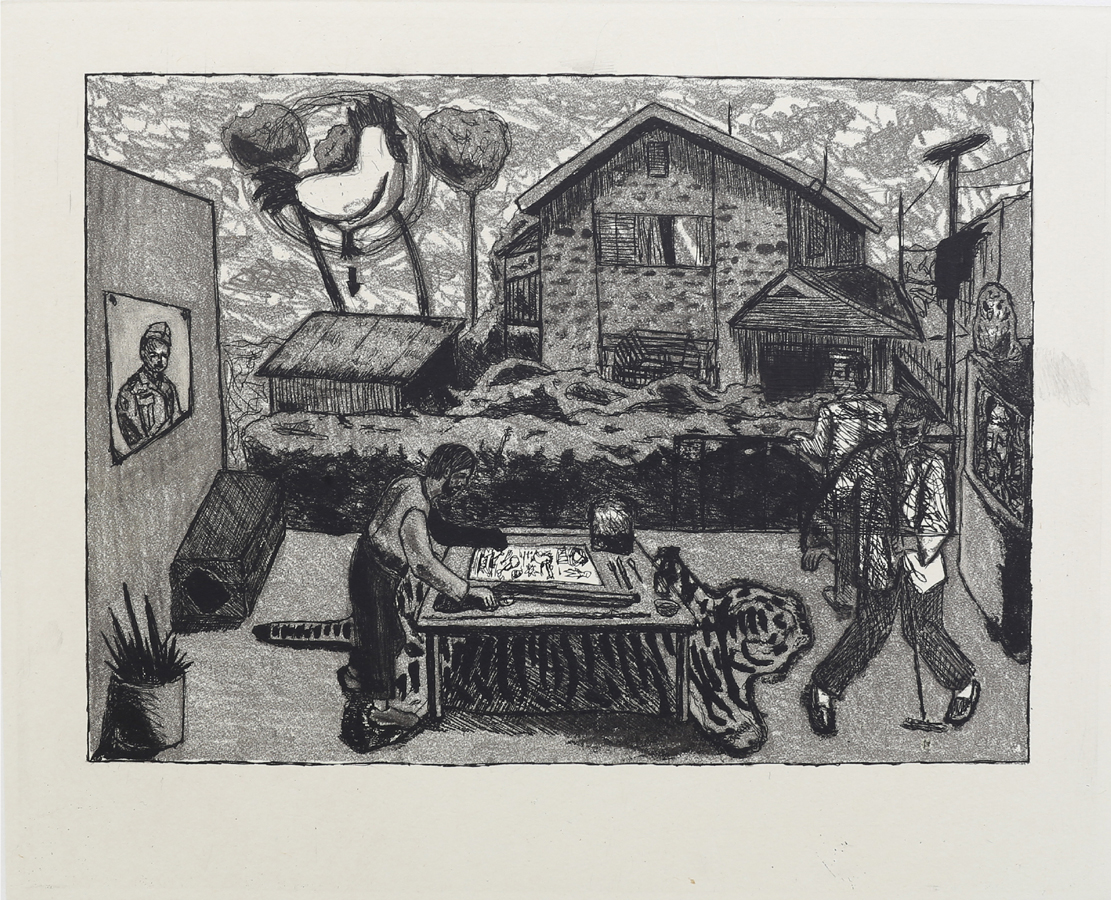
Technique: Copperplate printing, Japanese paper (etching, Japanese paper)
24.0×30.0cm
About the work/production
My goal is to open new rifts by colliding “everyday images derived from experience” with “extraordinary images derived from delusions” through the medium of copperplate prints.
The images that emerge from these cracks reenter my life and emerge new sensations and forms that stimulate the present.
As I pursue the shadow of what I want to see, I try to grasp the image that captures me more realistically through self-criticism.
The images are as ordinary and extraordinary as anything people dream of.
For me, painting is an act or will that shakes something fixed.
Judge Shinfuji’s recommendation comment
Lines carved into indelible grooves and traces, images that seem stiff and hard to move... However, this printmaker transforms them in many ways and irreversibly diverges them, sometimes creating a montage on a single sheet of paper of many different types of images that are created in the process, and memories = traces. Each time I print, I try to confirm the contingency of possible configurations. Chung Daeun was born in South Korea the year after the Seoul Olympics, eventually entered art school in Tokyo, completed military service while attending school, and then went to study abroad in Berlin, where the wall still remains after it collapsed in 1989, coincidentally the year of his birth. Printmaker. In his copperplate prints, there are glimmers of the paintings of Germans who bear the memory of the division between East and West, especially the works of Neo Rauch and others who came from the East rather than the West. However, Chong's version, which often acts as a delicate receptor and transducer for images that harbor negative memories, does not particularly sharpen and amplify the distortions and contradictions hidden in history = stories. Nor does it merely cynically ridicule and caricature the myths and beliefs that give unjust justice to violence. Rather, it is a medium that allegorically plasticizes the memories that have been imprinted on them without making them rigid, allowing them to be unraveled almost in rhythm. There are memories, traces, that only he can unravel. I'm kind of convinced of that.
Yasuyuki Nakai Jury Recommended Author: Ai Nariyama
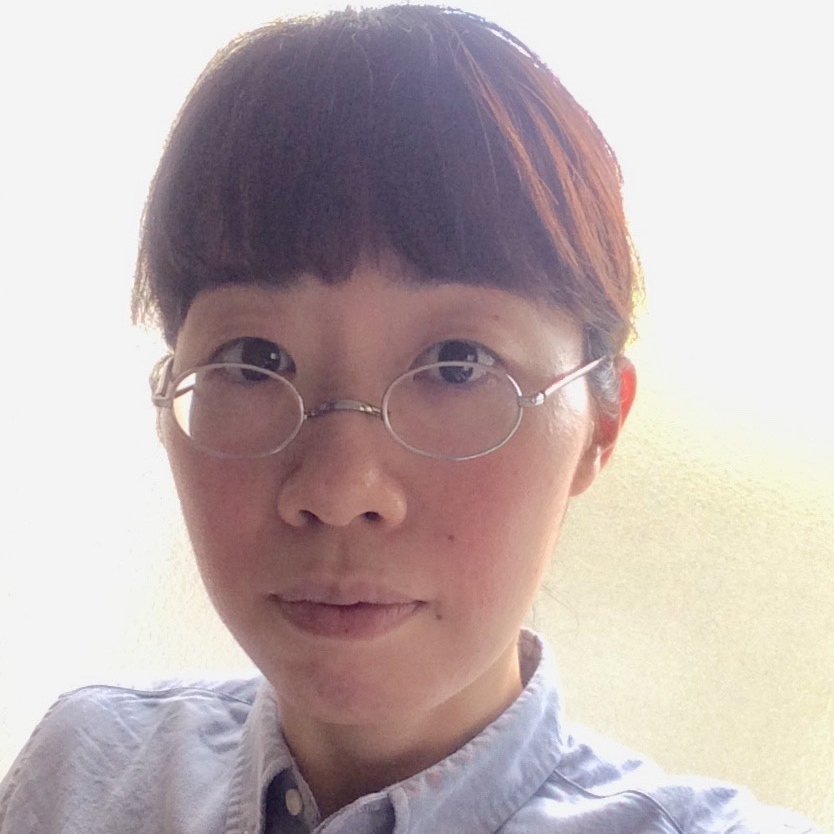
Career
| 1983 | Born in Osaka Prefecture |
|---|---|
| 2009 | Completed master's course in printmaking, Kyoto City University of Arts, Graduate School of Fine Arts |
exhibition
| 2010 | O Gallery eyes (Osaka) *Held every year at the same gallery since then |
|---|---|
| 2013 | O Gallery (Tokyo) *Since then, held at the same gallery in `18 |
| 2018 | Gallery Morning (Kyoto) *Since then, held at the same gallery in `19`20 |
Awards etc.
| 2017 | Shell Art Award Selected |
|---|
Reference work “two dogs”
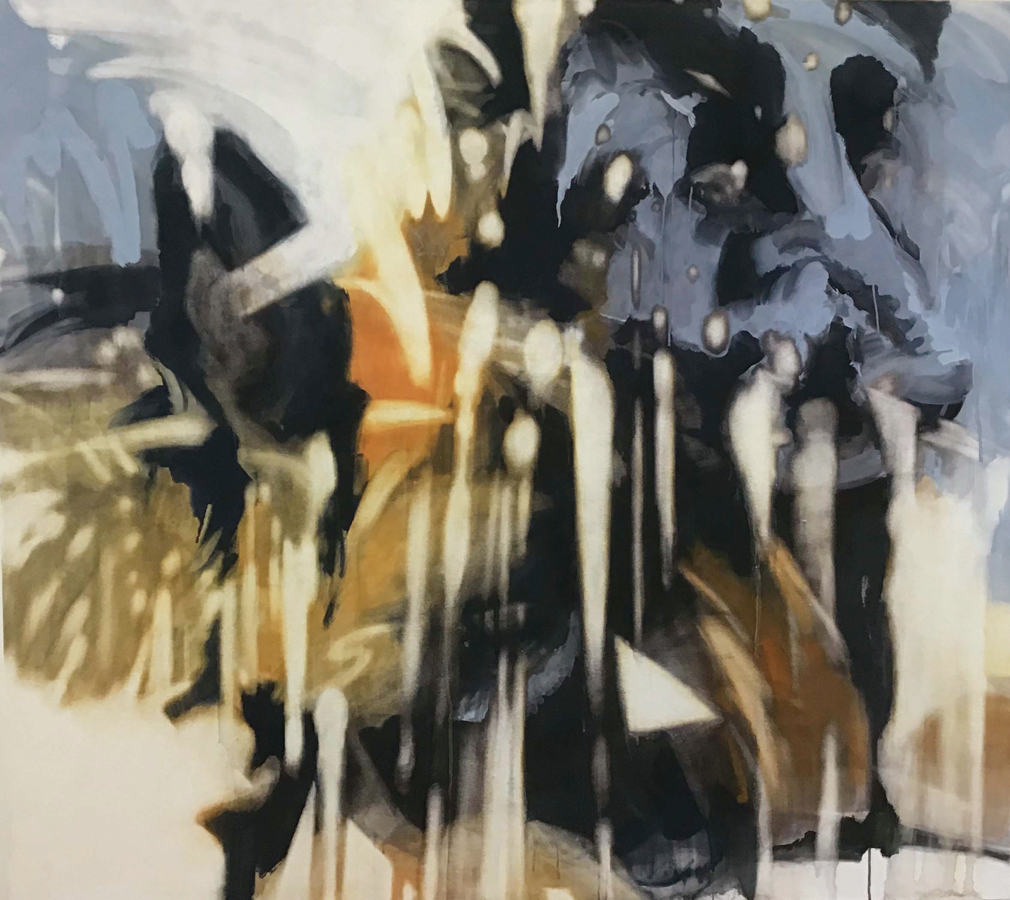
Technique: Acrylic paint on canvas
145.0×162.0cm
About the work/production
Up until now, I have been creating fantastical and narrative screens, and searching for the source of my thoughts from there. At the moment, I think that the seeds of “what should I express as a flat surface” will sprout from the source of my thinking, “suspecting and looking at things”.
A “screen that you stare at with suspicion” is a screen that cannot be easily recognized at first glance, like a trompe l'oeil, or a screen in which some other image is hidden in young people. The difference is that the screen guides you to the correct answer. The screen that you are looking for is one where it is difficult to understand the whole screen, or one where you want to understand the whole screen but are drawn to the partial elements and have a hard time grasping the whole screen. In order to create these images, I proceed with my work while thinking about how I can manipulate and utilize the materiality of the paint, the brush strokes, and the relationship between foreground and background in the painting.
Judge Nakai’s recommendation comment
Ai Naruyama's works are a combination of abstract expression and figurative imagery in an exquisite balance. Since the establishment of abstract expression in the early 20th century, individual artists have sought originality, using the theory advocated by Greenberg that recognized flatness as a characteristic of painting as a starting point, and have continued to pursue abstract expression. The battle between concrete images has continued. Naruyama's works seem to be connected to that lineage, but this is not the case. Some of the layered images that make up her work probably originate from the web. The incorporation of these images, which cannot be called abstract or concrete, seems to overlap in a way that is separate from the artist's consciousness. By inviting entities that are unrelated to individual will into his works, Naruyama reveals a very contemporary worldview.
Artist eligible for the 2nd “Residency Support Program” Tatsuma Takeda
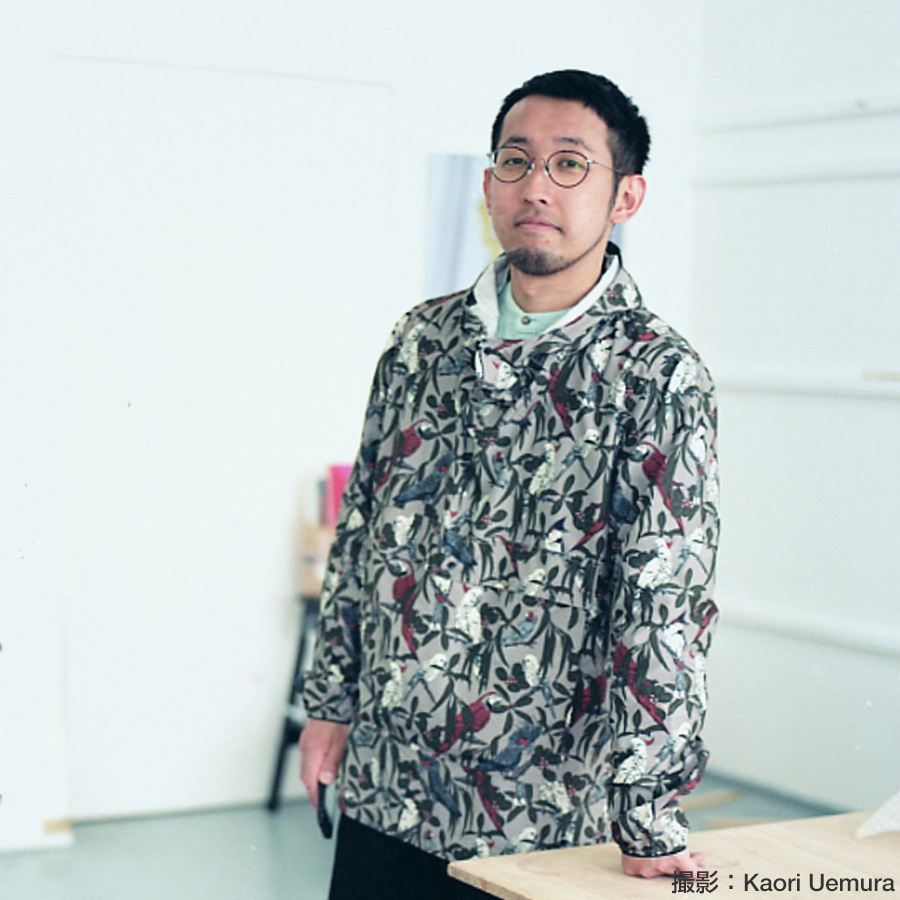
Photography by Kaori Uemura
Career
| 1988 | Born in Kumamoto Prefecture |
|---|---|
| 2020 | Dresden University of the Arts Carsten Nicolai Laboratory Completed Meisterschuller course Completed |
exhibition
| 2018 |
“TOKAS Bilateral Exchange Program” Kunstquartier Bethanien, Berlin | Germany Yoshino Gypsum Art Foundation Public Interest Incorporated Foundation Overseas Training Grant “Löwen Safari -L21-” Kunsthalle Lucerne, Lucerne | Switzerland “PATCHWORK” STOFF-PAVILLON, Cologne | Germany |
|---|---|
| 2019 |
“Chronicle” Projektraum Kunstquartier Bethanien, Berlin | Germany “Shell Art Award Residence Support Program” Cité internationale des arts, Paris | France |
| 2020 | "Meister 20” Motorenhalle, Dresden | Germany |
Awards etc.
| 2011 |
Tokyo Wonder Wall 2011 Tokyo Wonder Wall Grand Prize Shell Art Award Selected |
|---|---|
| year 2012 | Shell Art Award Selected |
”Skin Deep Beauty”
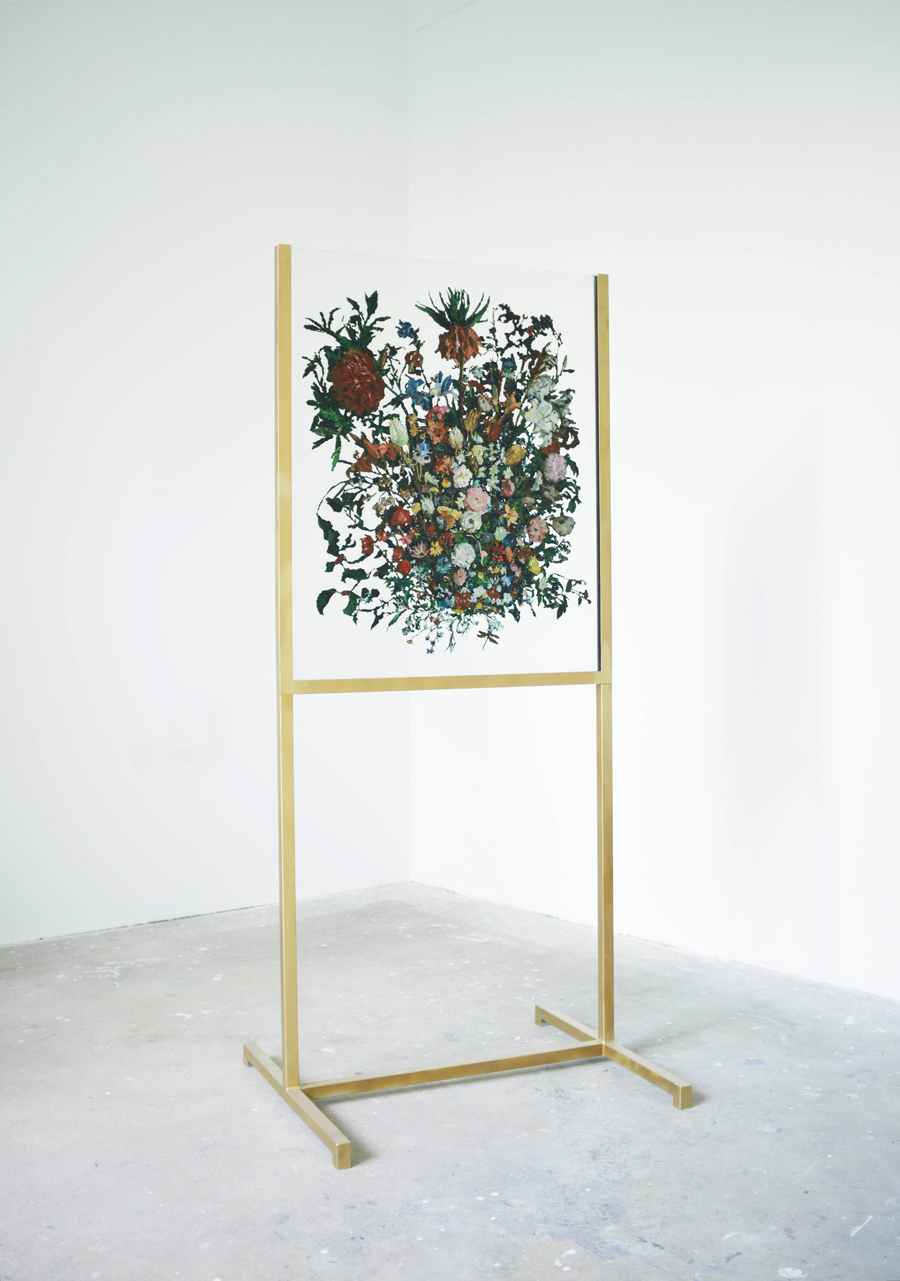
Technique: acrylic paint, epoxy resin, iron
190.0×80.0×70.0cm
For this exhibition
Since around the 17th century, a utopian world known as an internationalized society has been advocated, but through my own work, I have been able to look at what is happening behind such superficial beauty by referring to human history and art history. I would like to direct it. Also, in today's world, when that utopia has collapsed like the Tower of Babel, I would like to discern what kind of society will be created and create works by responding to the world.